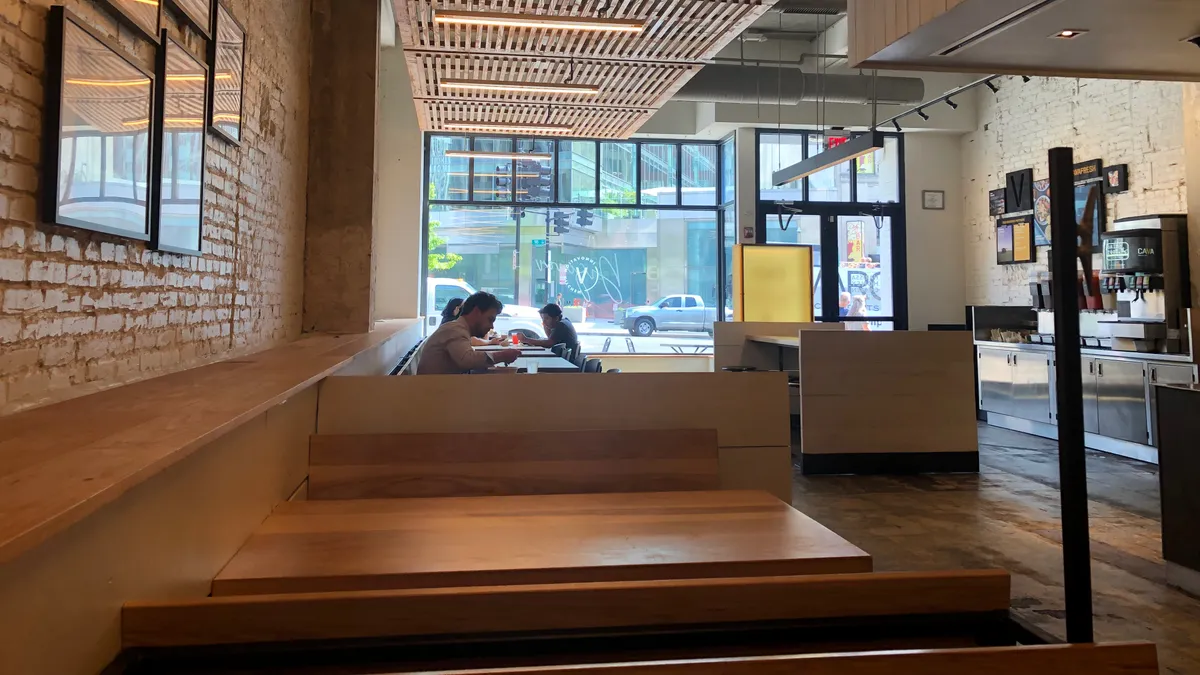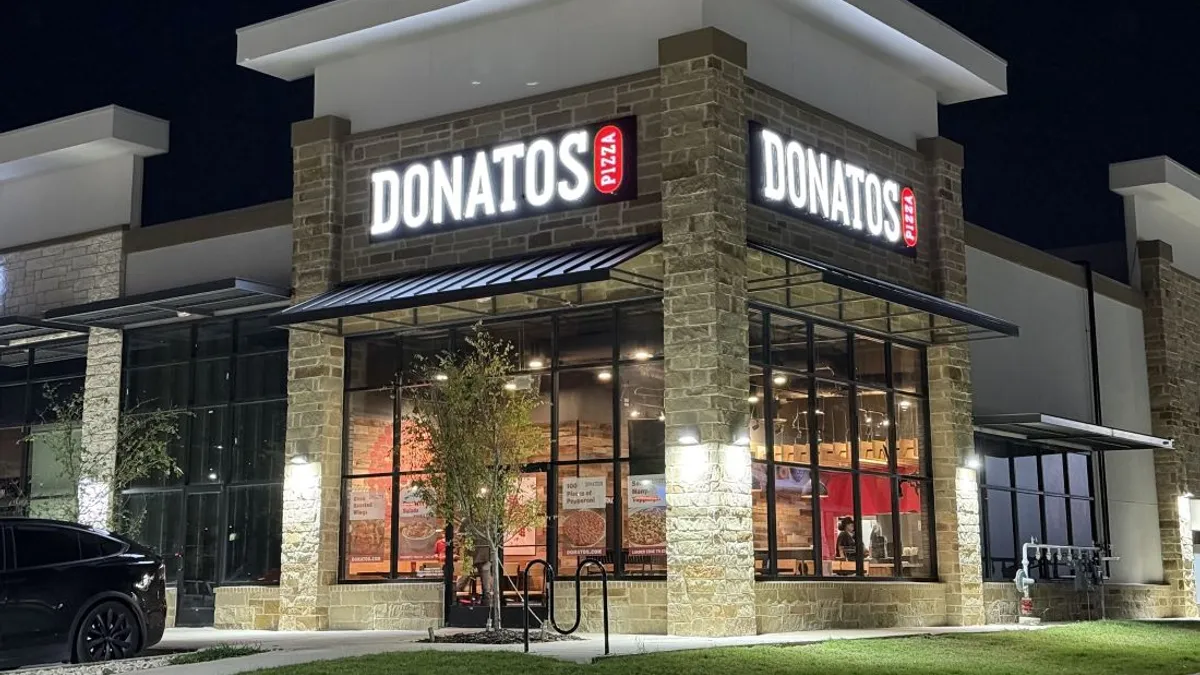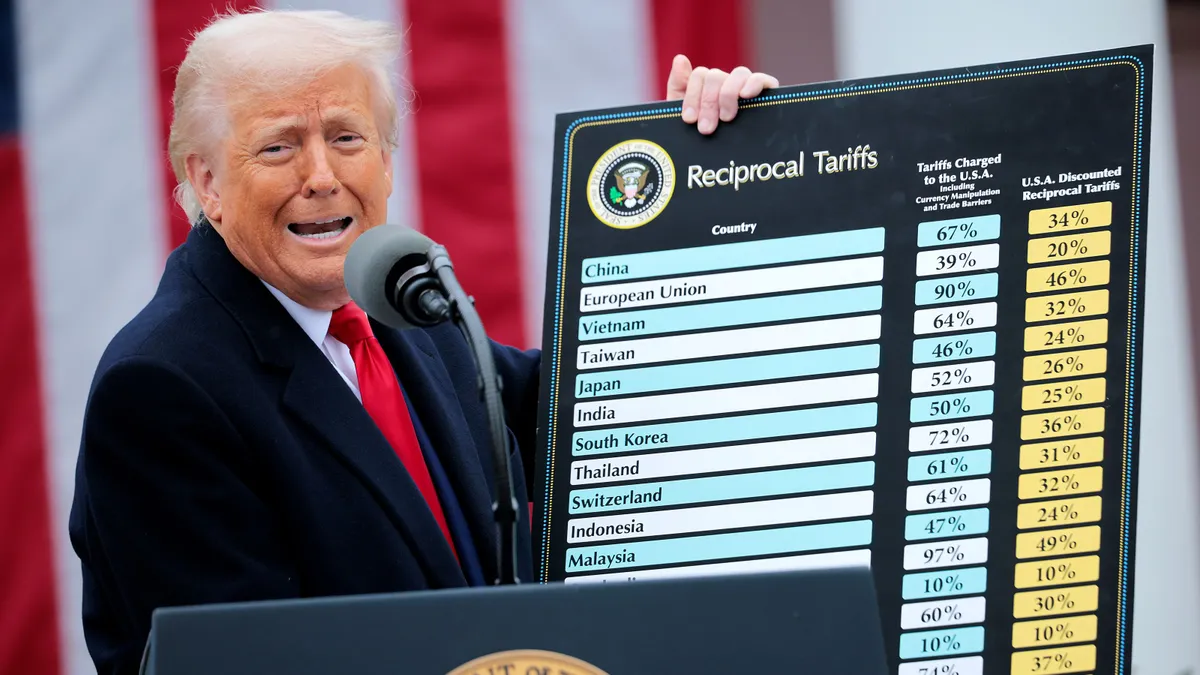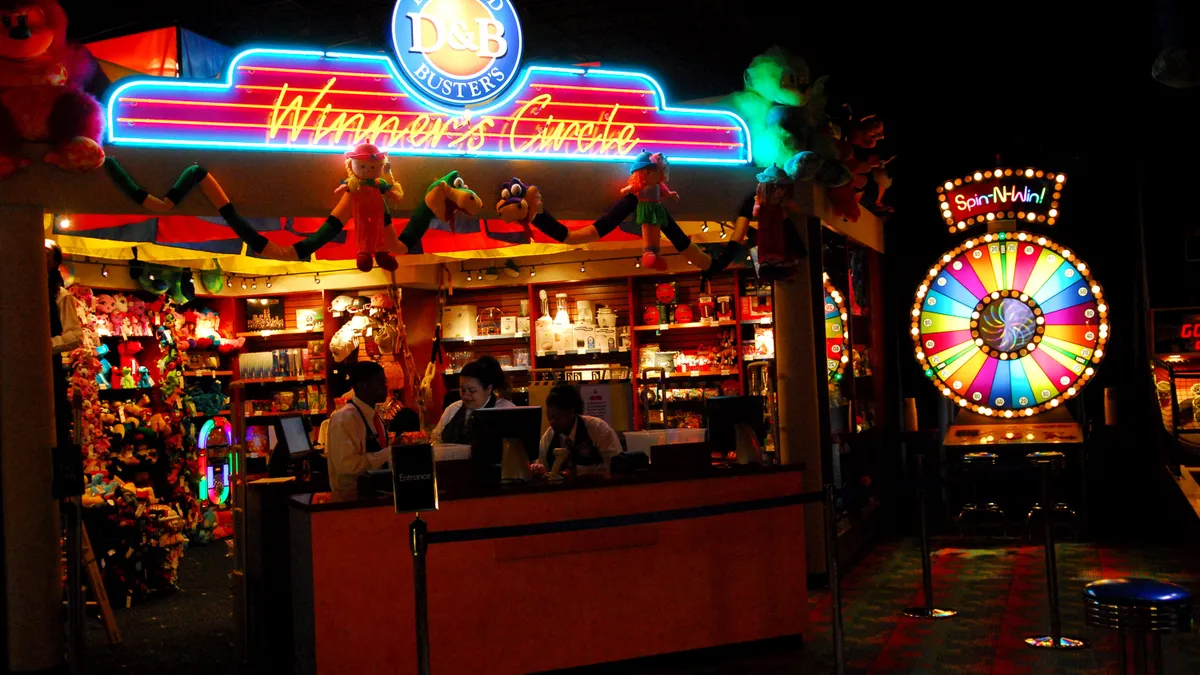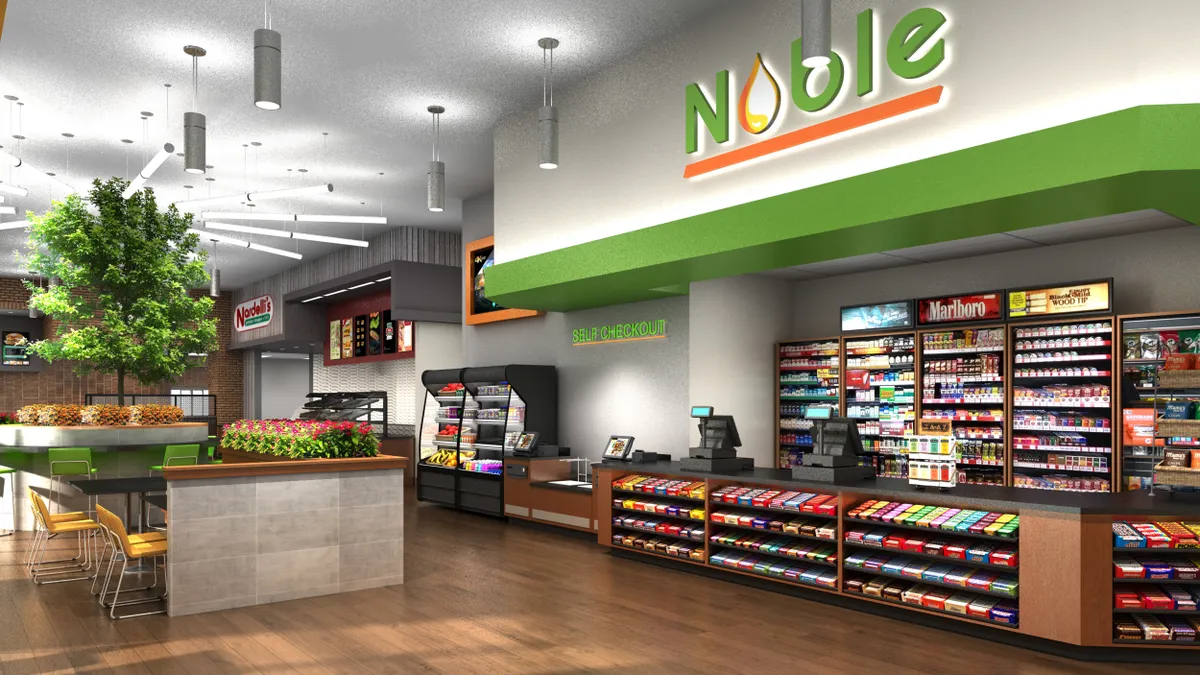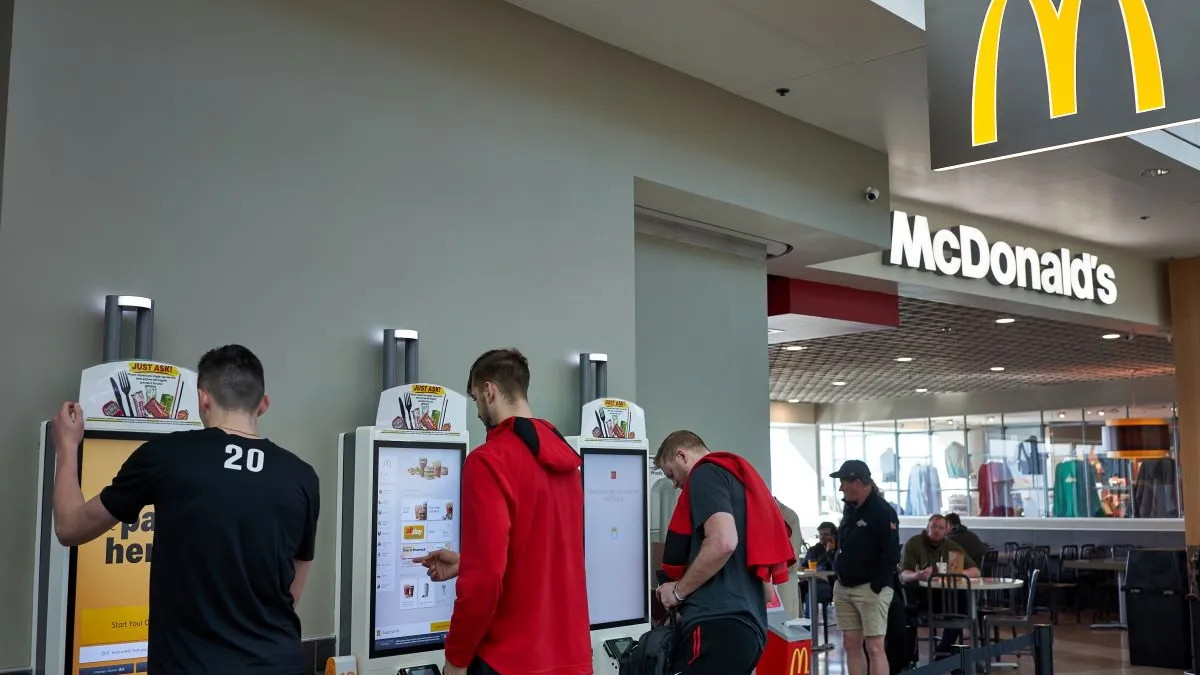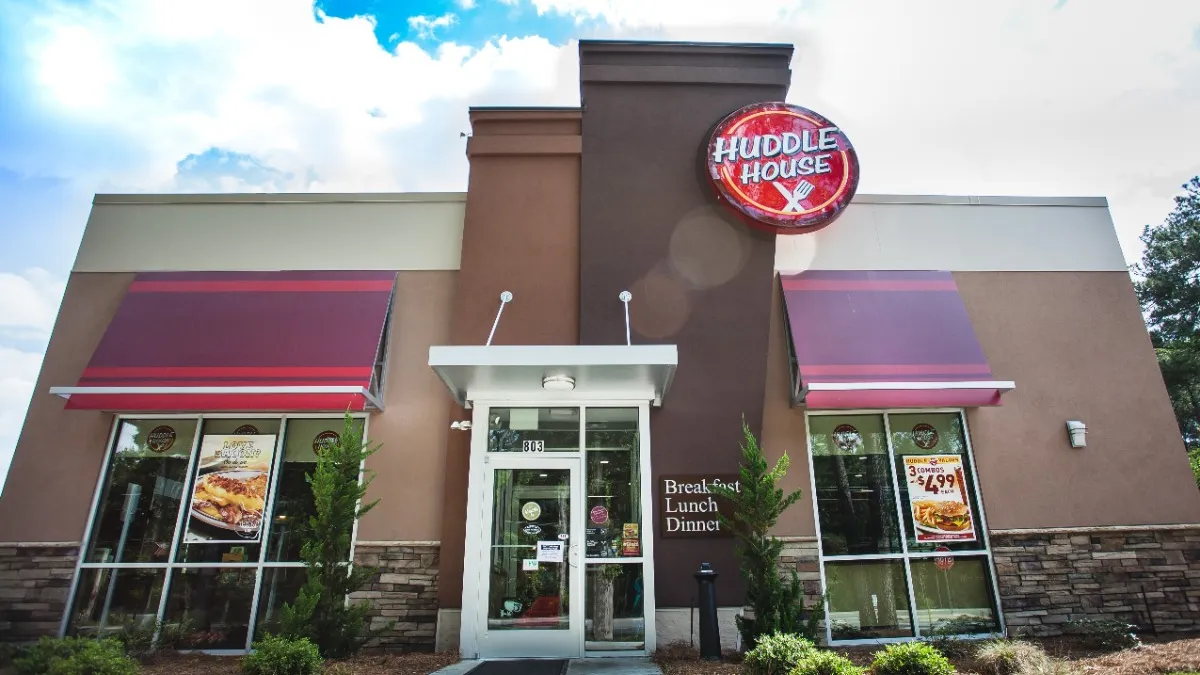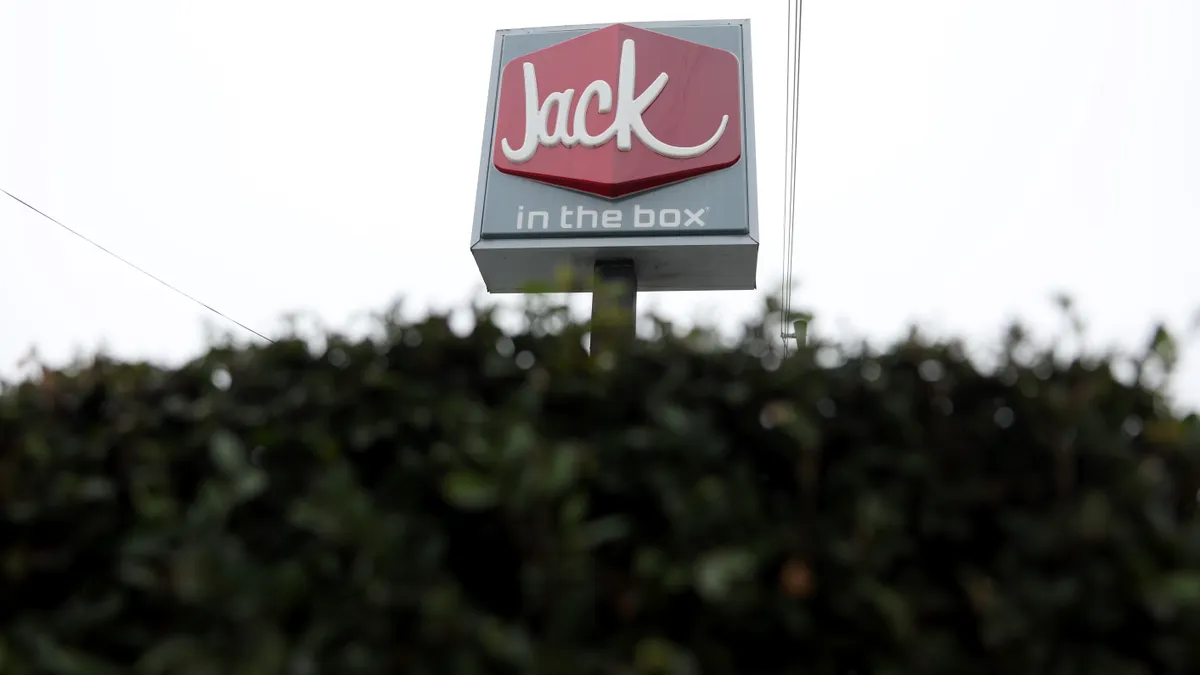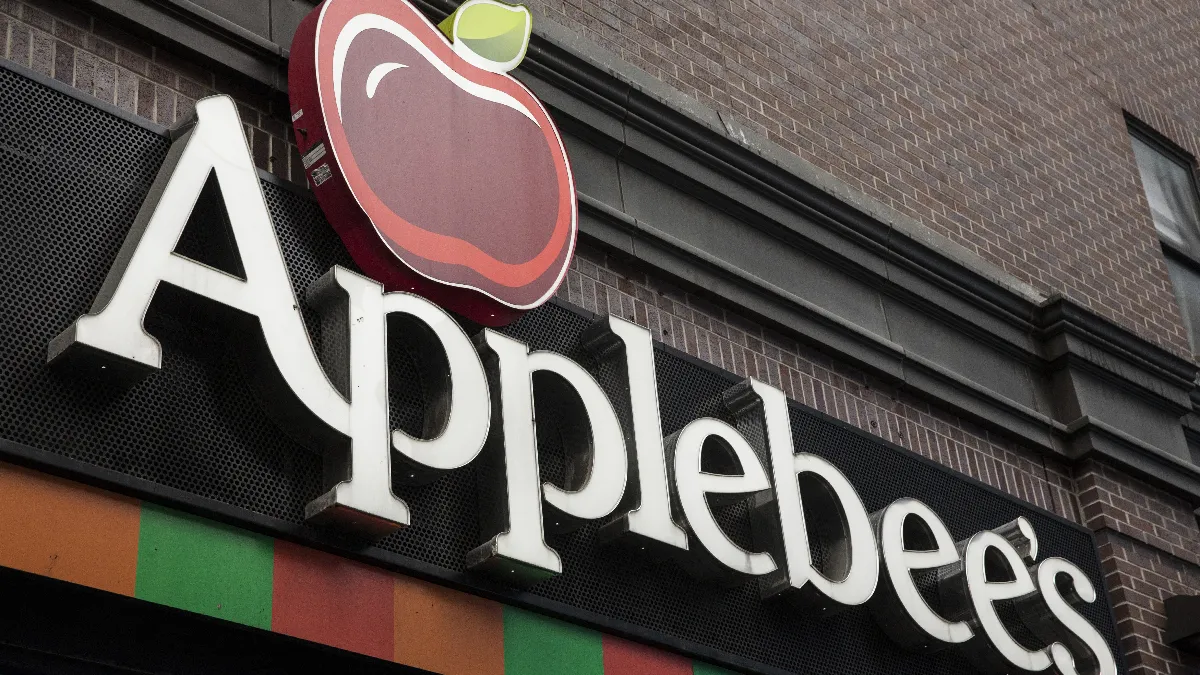In an unimposing white brick building along the busy street of Connecticut Avenue in downtown Washington, D.C., sits Cava's most recently renovated location. Passersby could easily mistake the nondescript Cava for a typical restaurant, but inside team members are serving new menu items within a retooled store layout. That's because the location has been transformed into the chain's first-ever innovation kitchen, a space where Cava can test menu design and new dishes in real time.
Restaurant Dive toured the site to learn more about how Cava uses the concept to try out new technology and how the chain decides which food offerings will be rolled out systemwide.
"We're off to the races just three weeks in," Cava Head of Strategic Communications and Brand Marketing Ben Famous told Restaurant Dive.
Current tests at the kitchen are expected to last about 28 days to a month to avoid overwhelming local team members and ensure its suppliers can accommodate the changes, Famous said.
Digital menu boards and labeled ingredients boost visibility
One of the biggest differences in the innovation kitchen is the colorful digital menu board that hangs above guests at the start of the line, a departure from the chain's static menus that are often changed seasonally. These digital menu boards offer the restaurant the ability to highlight new menu options and can be updated within seconds, Famous said. When Restaurant Dive visited, it advertised the chain's new Harissa Honey Chicken.
The board also offers a canvas for the company to experiment with menu layouts, such as one that might be more visual and explanatory for first-time customers, Famous said. That could mean grouping menu items by protein, grains and vegetables instead of having the current list-style layout.
A more subtle change to the store layout is the addition of labels at each part of the makeline where customers can identify the ingredients without having to ask a team member.
Pickup station reduces friction
Alongside pickup shelves and a second makeline, the company has a digital screen that tells pickup customers if their orders are ready or being prepared, Famous said.
The restaurant is also piloting mobile order drive-thru-style pickups in a handful of suburban markets, including Frederick, Maryland; Charlotte-Waverly, North Carolina; one of its Austin, Texas, locations; and Fredericksburg, Virginia, according to its website.
Other initiatives the company is considering include delivery, piloting third-party delivery with Caviar in Los Angeles and bike delivery using team members from a restaurant in D.C., Famous said. The restaurant piloted the in-house test for six months to evaluate all the pieces that go into owning this type of service for guests, he said. While the company is still evaluating what the future of delivery might hold for the restaurant, it knows that it will be an important way to meet its guests no matter where, how and when they want Cava, he said.
New menu items
Cava Chef and co-founder Dimitri Moshovitisi tries out menu items all the time with employees at its Washington, D.C. headquarters, but the innovation kitchen offers the company a way to see how the dishes fare with a demographic that's reflective of a typical Cava location, Famous said.
The innovation kitchen is currently cooking up a new protein, Harissa Honey Chicken — a sweet and spicy version of its existing chicken recipe. The new item has been doing so well with customer demand and sales growth, the company plans to develop a composed bowl created by Moshovitisi that is built around the new chicken flavor within the next few weeks. It may also add the protein as a mainstay at other restaurants, he said, depending on long-term performance to make sure demand isn't spiking just from the newness of the item.
This test, alongside a push to offer more suggestions from team members on ingredient pairings, will help the restaurant determine whether or not customers want more guidance on what ingredients work best together, he said.
Diners are also tasting two different crunchy toppings — crispy chickpeas and pita crisps — at the innovation kitchen. The company wanted to see what types customers preferred, Famous said. So far, those that like adding crunch to their bowls use both ingredients, which was a surprising finding, since they initially thought customers would prefer one or the other.
With strong demand for existing meat-free options, including falafel and roasted vegetables, Cava recently partnered with RightRice to offer the vegetable rice grain on its menu. The product is a combination of lentils, peas, chickpeas and rice flour pulverized into a rice grain. The ingredient is available as a topping at the moment, but could easily be transferred into a base ingredient.
Cava is also testing a vegan garlic sauce made with aquafaba, the juice of chickpeas, he said. The aquafaba is upcycled from the chickpeas used at the store.
Famous added that Cava is considering partnering with Beyond Meat, but hasn’t decided if the product would work well operationally or fit its core values.
Collecting live feedback
So how does Cava decide when a dish makes it out of the kitchen? A lot of feedback. The restaurant asks to interview customers about their experiences in exchange for a free lunch, Famous said. The goal is to have more dialogue with customers to make them a part of the creative process and more active partners as it builds its business, he said.
The team will also add ethos statements on the walls throughout the restaurant encouraging customers to share their thoughts and feedback, he said.
Using customer data, the restaurant is also tailoring email campaigns to local guests who tend to frequent the store to let them know about a new ingredient or other news at a specific restaurant.
While there are no plans for additional innovation kitchens at this time, Famous said that the chain views the D.C. location as an "alpha" store that could identify consumer trends that Cava can beta test at normal restaurants.
Correction: In a previous version of this article, the creator of RightRice and Cava's headquarters was misidentified. Keith Belling, the founder of popchips, created the product, and Cava is based in Washington, D.C.




